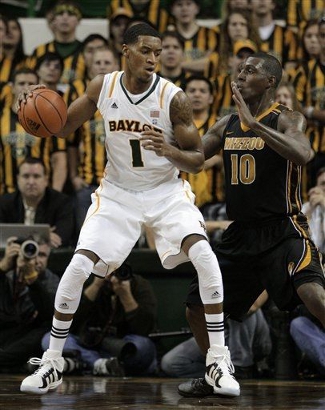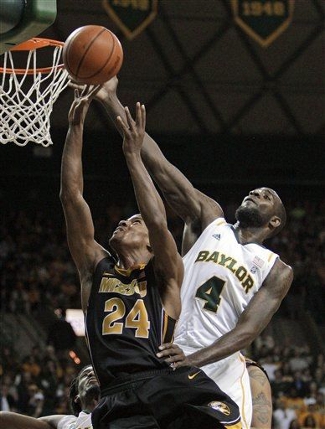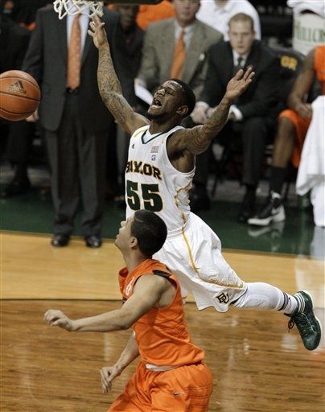Texas Longhorns (13-7 overall, 3-4 Big 12) at #7/6 Baylor Bears (18-2, 5-2)
Ferrell Center | Waco, TX | Tip: 12:05 P.M. CT | TV: CBS
LRT Consecutive Game #207
The Texas Longhorns took care of business on Tuesday night, earning a win they had to have over Iowa State. The Horns have spent most of the season positioned squarely on the proverbial NCAA tournament bubble, but another loss against a marginal RPI Top 50 team like the Cyclones would surely have darkened the postseason outlook for the Horns.
Today’s game against a deep, athletic Baylor team ranked in the Top 10 is certainly not a must-win. Even the most optimistic of Longhorn fans likely realizes just how difficult it will be for Texas to pull off a monumental road upset in Waco this afternoon. But while no one is expecting the Horns to march into the Ferrell Center and shock the nation, an improbable victory would provide a massive boost to Texas’ NCAA tournament chances.
By the numbers
The Bears roared out to a 17-0 record this season, the best start in school history. Baylor had close calls during that historic stretch, needing a clutch three and overtime to beat West Virginia in Las Vegas, while winning by just a bucket at Kansas State and against Mississippi State in Dallas. The Bears also won by three against BYU at the Marriott Center, one of the toughest venues in all of college basketball. With 11 games left until the conference tournament even begins, this Baylor team is already well-prepared for high-pressure situations.

Perry Jones III and Baylor are among the best in the nation
(Photo credit: Tony Gutierrez/Associated Press) 
Quincy Acy’s shot blocking protects the lane
(Photo credit: Tony Gutierrez/Associated Press) 
Pierre Jackson can be forced into mistakes
(Photo credit: Tony Gutierrez/Associated Press) |











